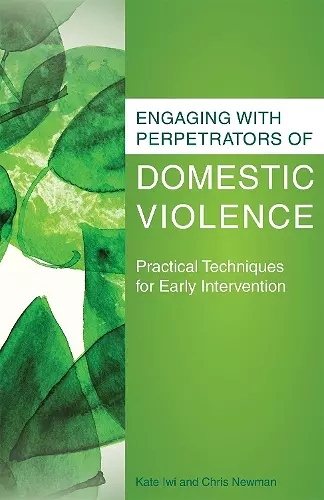Engaging with Perpetrators of Domestic Violence
Practical Techniques for Early Intervention
Chris Newman author Kate Iwi author
Format:Paperback
Publisher:Jessica Kingsley Publishers
Published:21st Jan '15
Should be back in stock very soon

Provides practical techniques for child protection workers for the early stages of intervention in domestic violence cases
When someone is suspected of being violent towards their family, the onus often falls on the victim to keep the children safe. This practical handbook turns the attention back to the cause of the problem, by helping practitioners to engage with perpetrators, to make safety-focussed interventions and motivate them towards seeking more in depth help.
Child protection and family workers can complete training without learning about how to work with domestic abuse perpetrators - but intervening at an early stage can make a real difference to increasing family safety.
This concise book equips practitioners with the knowledge and techniques they need to make the most of limited client contact with perpetrators. It outlines how to briefly assess perpetrators, how to prepare them for a perpetrator programme, and describes a range of interventions that can be used to reduce the risk they represent in the meantime. Drawing on approaches from motivational work, anger management, CBT and feminist models, but written in practical and easy to follow language, the book provides guidance for carrying out interviews and assessing risk, how to use safety plans, signals and time outs, understanding the impact of abuse on victims, how to analyse incidents of abuse and how to make an effective referral.
This reliable guide is a useful reference for any child protection worker wanting to make the most of the valuable opportunity they have to engage with domestic violence perpetrators.
This is a key text for any frontline child protection worker. It will help them to pro-actively engage with the perpetrator, briefly assess them and consider low-risk interventions. It highlights the challenge of developing a working neutral relationship with the perpetrator and offers guidance on how best to achieve this. The questionnaires and checklists are extremely useful to use as tools during direct sessions with the perpetrator, in particular the story boards. Importantly, this book does not lose sight of the child at the heart of the situation. Overall this should be seen as an essential read for social workers and practitioners from other settings to develop their learning and understanding of domestic violence. -- Ann Marie Symonds, Social Worker, Care and Court Planning, Staffordshire County Council and Lee Pardy-Mclaughlin, Principal Child and Family Social Worker, Staffordshire County Council
ISBN: 9781849053808
Dimensions: 216mm x 139mm x 10mm
Weight: 235g
176 pages